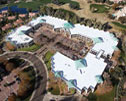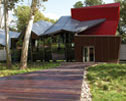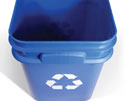Summer months often mean intense sunlight at roofing job sites, and roofing workers typically wear protective eyewear to resist the sun's harsh rays. Unfortunately, workers may emphasize style or brand name when selecting protective eyewear based on personal preferences rather than safety. However, when analyzing and choosing eye protection for your employees, you must be more practical and consider requirements set forth by the Occupational Safety and Health Administration (OSHA) and relevant standards published by the American National Standards Institute (ANSI).
Rules and requirements
OSHA sets out requirements for eye and face protection in construction in 29 CFR 1926.102, Subpart E, "Personal Protective and Life Saving Equipment." The rule states workers must be provided eye and face protection "when machines or operations present potential eye or face injury from physical, chemical or radiation agents."
Hazard assessments relating to eye injuries usually focus on flying particles from cutting, sanding or grinding operations. The radiation aspect mentioned in OSHA's rule involves ultraviolet (UV) radiation burns or welder's flash that can permanently damage eyes. However, UV rays from the sun also can damage eyes, and the intensity of the sun's UV rays can be increased by light-colored or reflective surfaces—bodies of water; snow; or roof system components, materials or coatings, for example.
At the heart of OSHA's eye protection rule is ANSI Z87.1. Although OSHA's regulation cites the ANSI standard's 1986 version, manufacturers generally test, develop and market protective eyewear according to Z87.1-2003, "Occupational and Educational Personal Eye and Face Protection Devices," which has enhanced performance provisions for eyewear from the standard's earlier versions.
Eyewear complying with the ANSI standard must be marked "Z87"; this marking usually is found on eyeglass frames at the temples near the hinge. On eye goggles or face shields, the Z87 marking usually is embossed into the lens in an inconspicuous spot near the top or side.
The Z87 marking reflects compliance with the "basic impact level" of strength testing in ANSI's 2003 standard. The Z87+ marking found on some eyewear indicates compliance with the "high impact level" of strength testing in the standard. Eyewear marked Z87+ has the capacity to protect against higher mass and velocity projectiles than eyewear marked Z87.
Many roofing suppliers and safety supply stores sell only Z87+ eyewear, but you should be wary of the types of safety eyewear available and their suitability for roofing hazards.
Availability
Safety eyeglasses and inserts for goggles and face shields are available with corrective lenses. According to OSHA rules that became effective in 2008, employers are required to pay for nonprescription safety eyewear—eyeglasses, goggles or face shields as determined by the hazard posed by the task—for employees exposed to eye hazards.
Safety eyewear complying with Z87 also is available with various lens shading that can minimize UV radiation's effects, increase visibility in bright sunlight and provide wearers added comfort.
Be vigilant
The National Institute for Occupational Safety and Health reports that every workday about 2,000 workers sustain eye injuries requiring medical treatment. More than 100 of those eye injuries result in one or more lost workdays.
When workers provide their own safety eyewear, you must be vigilant to ensure it complies with OSHA rules. If safety eyewear is required because of the nature of the hazards and eyewear worn by your workers is not suitable, you could face an OSHA fine.
Harry Dietz is NRCA's director of risk management.



